

AUTOMOBILE ROW... EARLY ST. LOUIS DEALERSHIPS
|
In the 1920's, if you lived in St. Louis, the best place to shop for a new car was probably along Locust Avenue. Just a short distance east of downtown, Locust was home to many of the areas biggest auto dealers, including Ford, Packard, Maxwell, Moon, and others. The Horseless Carriage Club of Missouri, and Hilliker Corporation, recently held ceremonies to dedicate historic plaques honoring the marques that were sold from many of the buildings still standing on Locust. The weather was perfect for this year's event, which was held on October 15, 2005. It was a great excuse to get out and see some cars that are very seldom shown. Each building had at least one example of the marques that were originally sold from these buildings, although relatively few of my photos show the actual cars, because my battery went dead about 30 minutes into the proceedings. By chance, I happened to be back in the neighborhood the next day, with a recharged battery to finish photographing the buildings. That was unfortunate, as I missed out on photographing the magnificent black Marmon V-16, the cute little red Maxwell roadster, and the slippery Chrysler Airflow that all showed up for this special event. Still, I was able to squeeze out quite a few pics, as you'll see below. |
||||
| The Tow Truck | ||||
 |
The event kicked off at about 11:00, as this 1947 Nash Towtruck pulled the Horseless Carriage Club's podium down the street, complete with a 4 piece trombone band, which goes by the name of "The Boneheads" in tow. Getting ready at the podium are at left, Peter Bitzer, President of the HCCMO, and on the right, Gerald Perschbacher, who is on the HCCMO's Board of Directors, and also a frequent contributor to Old Cars Weekly Magazine, from Krause Publications. In the background, you can see the Boneheads getting warmed up... |
|||
 |
||||
| The Stearns Knight Building | ||||
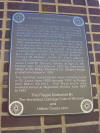 |
One of the events hosts was the Charles Motor Car Co., which is a classic car dealership operating out of the old Stearns-Knight Building. Note the near perfect 1958 Cadillac Fleetwood inside the showroom... Here's what the newly dedicated plaque tells us about the building: "This structure was
originally the dealership building in St. Louis, for the Stearns-Knight
automobile. Over the years, it also housed dealerships for the Stutz,
Lexington, Gardner and Inter-state automobiles and the Hug truck. |
|||
 |
||||
| The Car Show | ||||
 |
On the other end of the street in a vacant lot that was once home to other auto dealerships, an impromptu car show cropped up with some real gems on display. That little Model T with custom body work, showed off some very formal coachwork, and appeared to be a very solid survivor, even if some of the horse hair was poking through the driver's seat... It could be yours for $15,000, and created quite a buzz... Chances are good that it has been sold since this photo was taken. The neat little 1941 Desoto was sporting a fresh restoration, and had a mint original interior. In the background, you may notice there is a restored Mercury ragtop. The 1957 Chrysler Saratoga belongs to a friend of ours, and was purchased from the original owner who bought it for his wife in '57. When she died a short time later, he put the car away for the next 30+ years, and built a shrine around it complete with candles. It is an amazing super low mileage survivor... Finally, this blue Ford ragtop is still in the hands of the original owner! The 1966 Cadillac Series 75 limo was one of many in attendance that I've not seen before at any of the local shows. |
|||
 |
||||
 |
||||
 |
||||
| The Cadillac Building | ||||
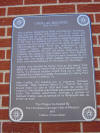 |
This was actually the first building on our walking tour... The plaque reads:
"This building, designed by Nolte and Nauman,
Architects, was built for Cadillac Automobile Co. of St. Louis, and
remained the St. Louis Cadillac dealership showroom through 1919. Cadillac
was already a respected luxury car, at the time this building was built.
In 1908, Cadillac had become the first production car in the world to have
fully interchangeable parts. From this achievement, came Cadillac's
slogan, "Standard of the World". In 1912, Cadillac introduced the first
self-starter, eliminating hand cranking, the cause of many broken arms.
The Cadillacs sold from the building's showroom were powered by 314 cubic
inch V-8 motors, which Cadillac had introduced in 1915, and had wheelbases
of 125 inches to 145 inches. A couple of big Caddies on the street added a touch of class... |
|||
 |
||||
 |
||||
 |
||||
 |
||||
| The Cadillac Chrysler Building | ||||
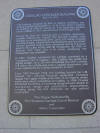 |
This is actually the other Cadillac building on Locust, and is located on the West end of the street, several blocks from the other dealership. The plaque reads: "This building, designed by
Wm. A. Balsch, Architects, was built by Cadillac Automobile Co., of St.
Louis when it outgrew its building at 2920-22 Locust St. The dealership
became Oliver Cadillac in 1927, and remained here through 1930. |
|||
 |
||||
| The Franklin Building | ||||
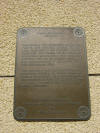 |
Although the building has been face lifted at some time in the past, if you look hard you can see some of the original features behind the facade to the Franklin building. The plaque reads:
"From the time of its construction and into the
1920's this building housed the St. Louis dealership for the Franklin, a
luxury automobile. The Franklin was the only large production automobile
ever made in America with an air cooled engine. It was manufactured in
Syracuse, NY from 1902 through 1934. Two of the sharpest cars on display that day were this magnificent Franklin Pirate, and the sporty little Auburn Cabriolet... The deep burgundy Franklin Pirate was very unusual in that its doors are curved along the bottom edge, flaring out toward vestigial running boards, really no more than small metal strips that were more decorative than functional. This car is also unusual in that it is actually a dual cowl convertible sedan, complete with roll up rear windows. I've never seen anything quite like it... Magnificent! |
|||
 |
||||
 |
||||
 |
||||
| The Cole Standard Building | ||||
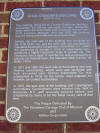 |
The plaque reads:
"This building,
designed by Preston Bradshaw, Architect, exemplifies the turmoil and rapid
changes during the years when the automobile was revolutionizing the lives
of St. Louisans. Between 1919 and 1935, this building was the home of ten
different auto dealerships. |
|||
|
|
||||
 |
||||
| The Ford Building | ||||
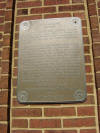 |
The plaque reads:
"The east side of this building initially
housed the BF Goodrich Tire dealer for St. Louis and the west side housed
General Motor Car Co., the St. Louis Hupmobile dealer. |
|||
 |
||||
| The Maxwell Building | ||||
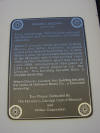 |
The plaque reads:
"From 1910 through 1924 this building housed
the Maxwell and the Chalmers automobile dealership. |
|||
 |
||||
| The Locomobile Building | ||||
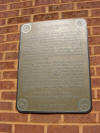 |
The plaque reads:
"This building
initially served as the St. Lolius dealership for the Locomobile
automobile. The structure later housed the dealership for the Davis Six
and Maibohm automobiles. The Locomobile, a massive luxury car, was
manufactured from 1899 to 1929 in Bridgeport, Connecticut. As its name
implies, the Locomobile was originally steam powered, but it was changed
to internal combustion in 1903. |
|||
 |
||||
| The Nash Building | ||||
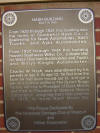 |
I love Nashes, so naturally, this building fascinated me... The plaque reads:
"From 1920 through
1931 this building was the home of Southwest Nash Co., a dealership for
Nash Automobiles, Nash Trucks, and Ajax Automobiles. I'm not quite sure what this green convertible coupe really is...? Perhaps an astute Huff Report reader can enlighten me on this one. Note the lightning bolt on the radiator... This black Terraplane sedan was driven to this event by Bill Hubert, a well known St. Louis hobbyist. Bill has a soft spot for those orphan cars... This one appears to be a 1937 model. The big green Nash Touring car looked period perfect parked near the front door of the old Nash Building... |
|||
 |
||||
 |
||||
 |
||||
 |
||||
| The Stutz Building | ||||
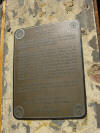 |
One of the fanciest old buildings on the block, the Stutz plaque reads:
"From 1918 through 1924, this building housed
the Supreme Motor Co., the St. Louis Dealer for the Stutz automobile. |
|||
 |
||||
| The Durant Star Building | ||||
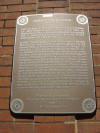 |
Fascinating stuff... The plaque reads: "First occupied in 1912 by
Firestone Tire and Rubber Co. and Oldsmobile Co. of St. Louis, then by
dealerships for Buick, Nash and Lafayette, this building was a dealership
for the Star and the Durant automobiles from 1924 to 1930. |
|||
 |
||||
| The Packard Building | ||||
 |
Many blocks to the east, is this grand old building, the home to the original Berry Packard Dealership. Today, this building is being renovated and converted into lofts... Check out the website link by clicking HERE for more information on the Packard Lofts... |
|||
|
If you have found this page through a search engine, you may want to go to the home page for more unusual car stuff... |
||||